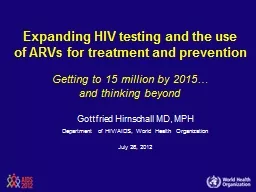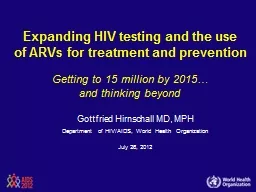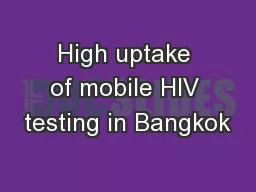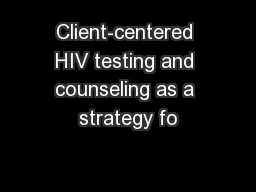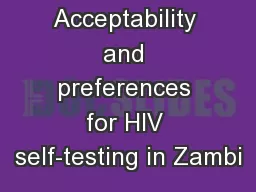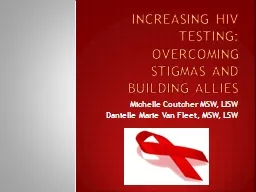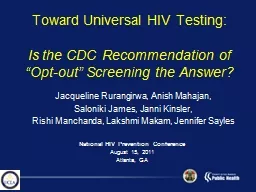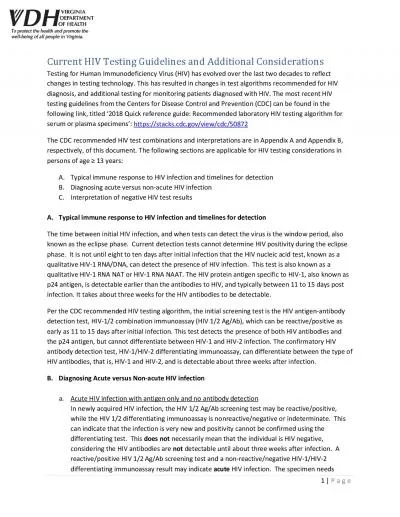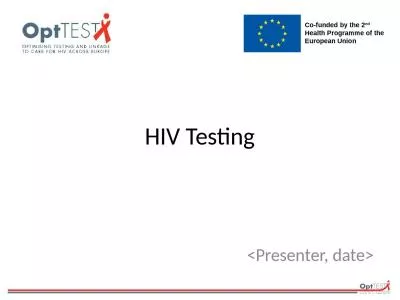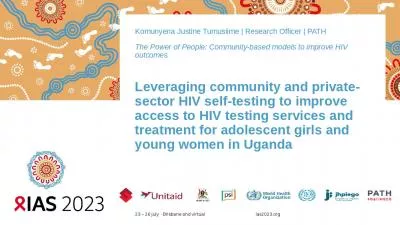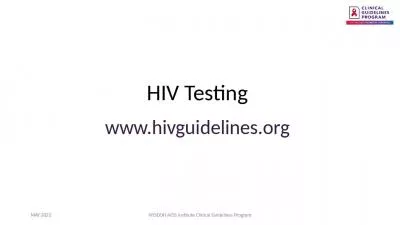PPT-Expanding HIV testing and the use
Author : briana-ranney | Published Date : 2018-01-31
of ARVs for treatment and prevention Getting to 15 million by 2015 and thinking beyond Gottfried Hirnschall MD MPH Department of HIVAIDS World Health Organization
Presentation Embed Code
Download Presentation
Download Presentation The PPT/PDF document "Expanding HIV testing and the use" is the property of its rightful owner. Permission is granted to download and print the materials on this website for personal, non-commercial use only, and to display it on your personal computer provided you do not modify the materials and that you retain all copyright notices contained in the materials. By downloading content from our website, you accept the terms of this agreement.
Expanding HIV testing and the use: Transcript
Download Rules Of Document
"Expanding HIV testing and the use"The content belongs to its owner. You may download and print it for personal use, without modification, and keep all copyright notices. By downloading, you agree to these terms.
Related Documents

